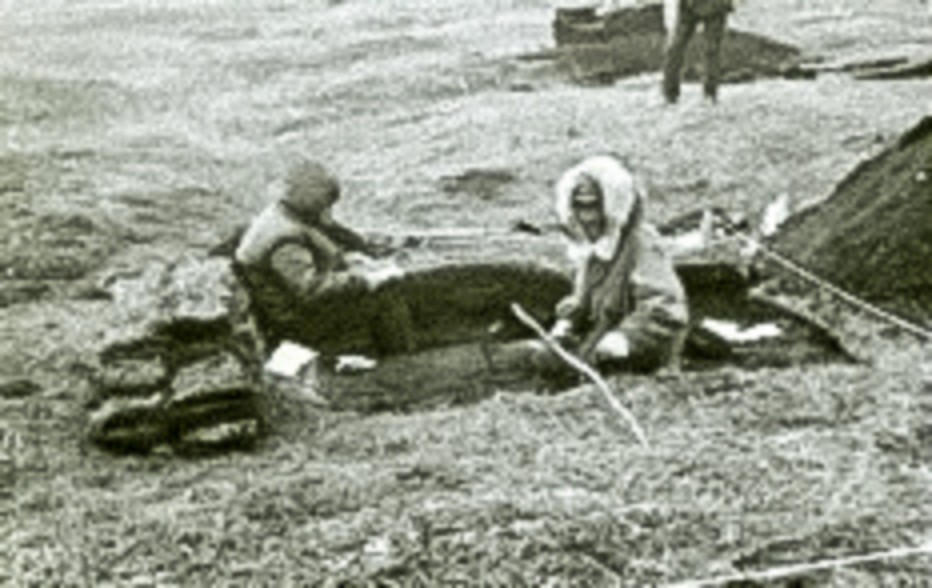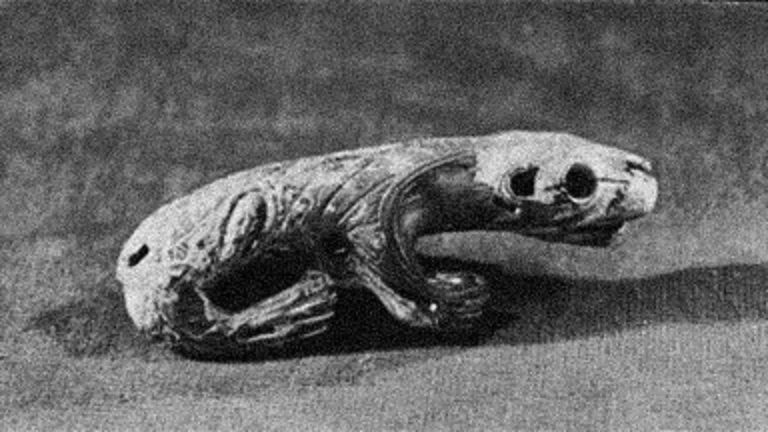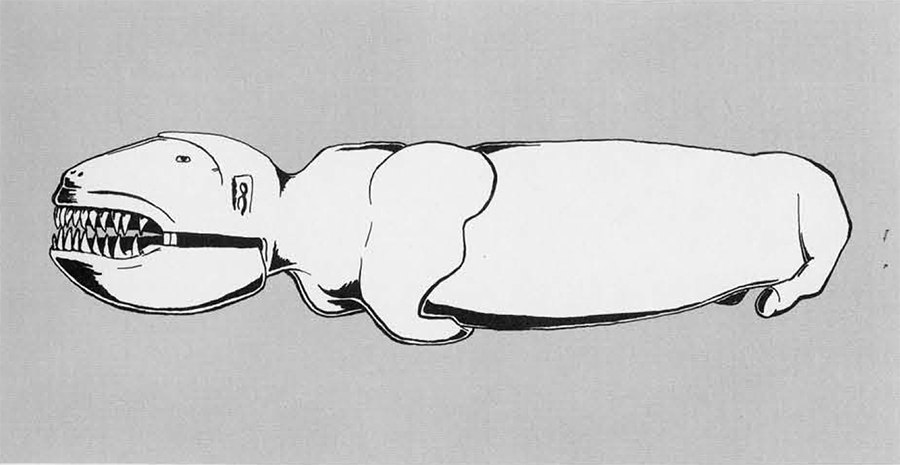Located at Point Hope, Alaska, the ancient city of Ipiutak holds a significant place in the annals of history. Once a thriving metropolis where people lived, traded, and practiced unique rituals, Ipiutak now lies in ruins, leaving behind only remnants of its past glory. However, the archaeological and historical importance of this site cannot be overstated. Unraveling the mystery of Ipiutak holds the key to unlocking vital knowledge about a vanished culture and the early inhabitants of North America.

The enigmatic builders of Ipiutak
The history of Ipiutak is clouded in uncertainty, with conflicting information surrounding its origins and the identity of its builders. Dating back at least 2,000 years, the community eventually collapsed around 800 CE, leaving archaeologists to piece together the puzzle of its creation and demise.
The builders of Ipiutak were a sophisticated people, surpassing the Inuits in terms of advancement. They constructed the ancient city on a grid pattern, reminiscent of the ancient cities of the Indus Valley civilization. With approximately 600 abandoned houses, one thousand unusual artifacts, and a vast cemetery, Ipiutak stands as the largest site of its kind in the Arctic Inuit region.
A fair-haired and blue-eyed race?
Legends of the Inuit people tell a fascinating tale about the original builders of Ipiutak. According to their oral tradition, the ancient city was not built by the Inuits themselves but by a fair-haired and blue-eyed race. These legends also speak of white giants who once inhabited Ipiutak until the War of the Gods. The enigma deepens as we speculate on the possible origins of these mysterious builders. Could Ipiutak have been a Viking settlement or connected to the Dorset culture? The truth remains elusive.
The theory of Asian Origins
Some archaeologists, like Rainey Froelich, believe that the builders of Ipiutak hailed from Asia. Froelich suggests that the culture of Ipiutak predates known Inuit cultures on the Arctic coast and likely originated in eastern Asia. The artifacts discovered at Ipiutak, including ivory carvings and engraved tools, display artistic patterns distinct from related cultures. The intricate craftsmanship and unique artistic style of these objects raise questions about the cultural origins of Ipiutak.
The unusual customs of Ipiutak
The ancient city of Ipiutak not only boasted sophisticated architecture and skilled craftsmanship but also practiced intriguing customs and rituals. The archeological discovery of more than 5,000 graves in the vicinity of Ipiutak sheds light on the cultural practices of its inhabitants.
Those graves at Ipiutak offer a glimpse into the burial customs of its people. Some graves contain ancient skulls with artificial eyeballs made of ivory and jet. Others feature ivory nose plugs shaped like bird’s heads, ivory death masks, and even small mummified animals with inlaid obsidian eyes. These findings suggest a strong connection to shamanism and draw comparisons to the Scytho-Siberian cultures of Ukraine.
The population of Ipiutak
Froelich Rainey, who excavated the site, estimated that Ipiutak was once a settlement with a population of several thousands in its peak. This population size would have exceeded that of the modern city of Fairbanks, Alaska. The sheer scale of Ipiutak hints at a thriving community that played a significant role in the region.
The ancient art of Ipiutak

One of the most remarkable aspects of Ipiutak is its rich artistic heritage. The city’s inhabitants were skilled in various forms of art, ranging from intricate ivory carvings to engraved tools. These artistic expressions shed light on the cultural and spiritual beliefs of the people who once called Ipiutak home.
The Ipiutak people showed their sophistication in decorative carvings, particularly in ivory, wood, bone, and stone. The carved ivory artifacts found at Ipiutak display distinct artistic patterns that set them apart from the works of other cultures. The significance and symbolism behind these intricate carvings continue to fascinate archaeologists and art enthusiasts alike.
Symbolism and shamanism

Many of the carvings discovered at Ipiutak are believed to have held symbolic meaning and were likely associated with shamanism. Shamanism was a prevalent practice among the inhabitants, and the objects found in the graves of shamans suggest a strong spiritual connection. The presence of loon skulls with ivory eye plugs and the representation of polar bears in carvings hint at a connection to ancient cults and ceremonial practices.
Ipiutak: A window into ancient Arctic culture
Ipiutak serves as a gateway to understanding the ancient Arctic cultures that existed thousands of years ago. Through extensive archaeological excavations and analysis, researchers have gradually pieced together the puzzle of Ipiutak’s history and its significance in the broader context of North American civilizations.
The circumpolar Stone Age connection
Some scholars believe that the various tribes inhabiting the Arctic, such as the Lapps, Samoyeds, Yukaghir, and Inuits, share a cultural tradition rooted in an ancient circumpolar Stone Age. This tradition may have originated from the reindeer hunters of Magdalenian times in western Europe. While there is ongoing debate regarding the origins of the Inuit people, it is clear that they have developed a unique Arctic culture closely tied to their environment and subsistence patterns.
Moreover, the Arctic has not been a stagnant refuge for ancient Stone Age communities. Cultural change and development have been integral to the region’s history, much like other parts of the world. Excavations across Siberia, Alaska, Canada, and Greenland have revealed a long history of Arctic settlement, characterized by distinct stages and cultural shifts.
The three time horizons
Archaeologists have identified three distinct time horizons in the Arctic’s history: the ancient Stone Age, the paleo-Inuit stage, and the neo-Inuit stage. The ancient Stone Age culture, with its chipped flint tools, predates 2000 BC. The paleo-Inuit stage, marked by polished slate tools, spanned from 700 BC to AD 300. Finally, the neo-Inuit stage emerged around AD 300 and continues to the present. Each stage reveals unique cultural traits, technological advancements, and artistic expressions.
In conclusion
Despite decades of research and excavation, the enigma of Ipiutak remains unsolved. The original builders of this ancient city, their origins, and their ultimate fate still elude us. The legends of the Inuit people, the archaeological evidence, and the presence of unique artistic expressions all tantalize us with glimpses into a vanished culture. Unraveling the mystery of Ipiutak continues to be a captivating quest, offering invaluable insights into the early inhabitants of North America and their remarkable achievements.
As we delve deeper into the study of Ipiutak, our understanding of the ancient Arctic cultures grows, expanding our knowledge of human history and the diverse civilizations that once thrived in the far reaches of the world.
After reading about the ancient city of Ipiutak, read about Inuit snow goggles carved from bone, ivory, wood or antler, then read about 16 ancient cities and settlements that were mysteriously abandoned.




